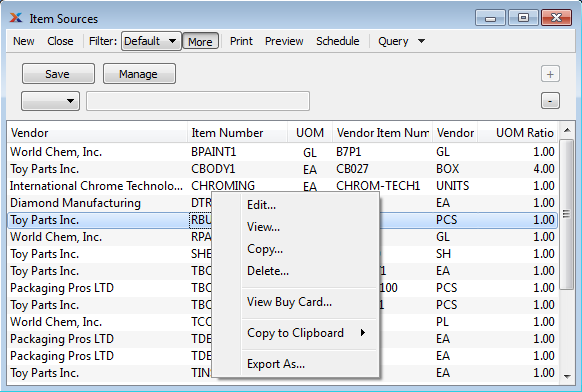
|
xTuple ERP Reference Guide |
The Item Sources screen lists all your company's item sources. An item source makes the link between an item you stock and the vendor who sells it to you. You must define item sources to take advantage of many of xTuple's purchasing features—including purchase requests, drop shipping, and releasing planned orders from the module. In addition to providing the complete list of item sources, this screen can also be used to build detailed item source reports. Use the search filter options to sort the information into item source categories you want to look at.
Here are some tips for using this screen:
Use the right-click menu to edit an item source in the list.
Don't confuse item sites and item sources. An item site links an item to the site where it is located in your inventory. Item sources, on the other hand, define the relationship between your items and the vendor who sells them to you.
The search filter allows you to group item sources by item or vendor.
To view the Item Sources screen, go to . The following screen will appear:

The default filter on the Item Sources screen shows all active item sources. You can build your own search criteria using the following options:
Select a filter from the list of available filters, then select the button to generate search results. Only saved filters will appear in this list.
Select this button to show the parameters underlying the saved filter. To hide the parameters, click the button a second time.
When building a custom query, you have the following options:
Select to add a new parameter to the query.
Select to remove a parameter from the query. This option is disabled for default parameters.
Select to save your filter for future use. Saved filters will appear in the list of available filters.
Select to manage your saved filters. To learn more about managing filters, please see Section 2.1.2, “Search Filters”.